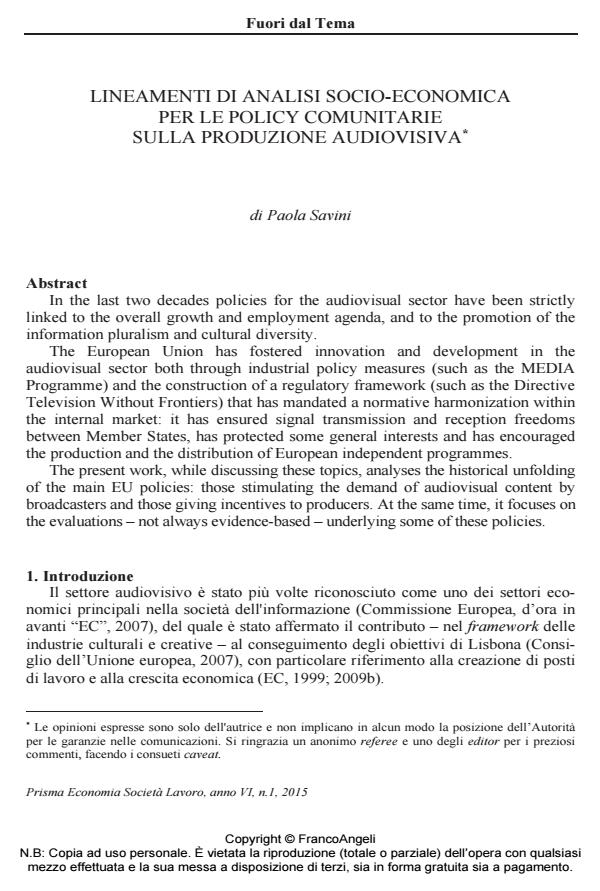Lineamenti di analisi socio-economica per le policy comunitarie sulla produzione audiovisiva
Journal title PRISMA Economia - Società - Lavoro
Author/s Paola Savini
Publishing Year 2015 Issue 2015/1
Language Italian Pages 17 P. 206-222 File size 90 KB
DOI 10.3280/PRI2015-001018
DOI is like a bar code for intellectual property: to have more infomation
click here
Below, you can see the article first page
If you want to buy this article in PDF format, you can do it, following the instructions to buy download credits

FrancoAngeli is member of Publishers International Linking Association, Inc (PILA), a not-for-profit association which run the CrossRef service enabling links to and from online scholarly content.
In the last two decades policies for the audiovisual sector have been strictly linked to the overall growth and employment agenda, and to the promotion of the information pluralism and cultural diversity. The European Union has fostered innovation and development in the audiovisual sector both through industrial policy measures (such as the MEDIA Programme) and the construction of a regulatory framework (such as the Directive Television Without Frontiers) that has mandated a normative harmonization within the internal market: it has ensured signal transmission and reception freedoms between Member States, has protected some general interests and has encouraged the production and the distribution of European independent programmes. The present work, while discussing these topics, analyses the historical unfolding of the main EU policies: those stimulating the demand of audiovisual content by broadcasters and those giving incentives to producers. At the same time, it focuses on the evaluations - not always evidence-based - underlying some of these policies.
Paola Savini, Lineamenti di analisi socio-economica per le policy comunitarie sulla produzione audiovisiva in "PRISMA Economia - Società - Lavoro" 1/2015, pp 206-222, DOI: 10.3280/PRI2015-001018